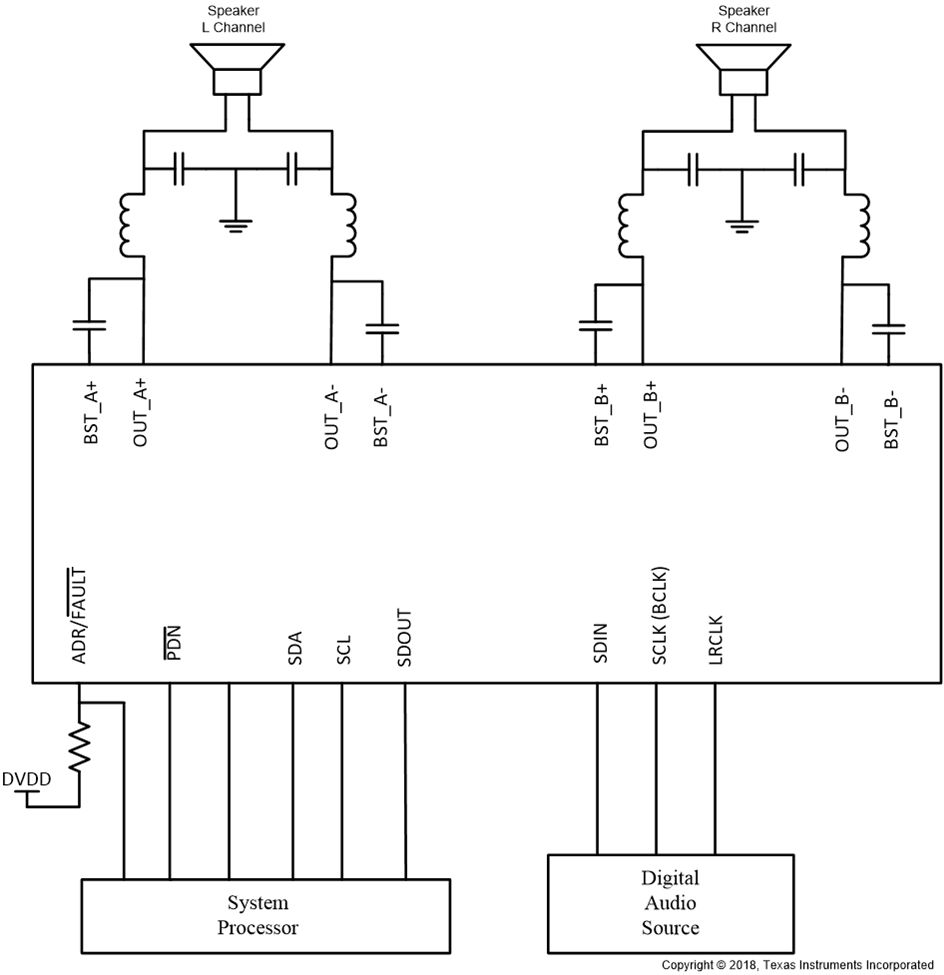SLOSEA8 December 2024 TAS5815
PRODUCTION DATA
- 1
- 1 Features
- 2 Applications
- 3 Description
- Device Comparison Table
- 4 Pin Configuration and Functions
- 5 Specifications
- 6 Typical Characteristics
-
7 Detailed Description
- 7.1 Overview
- 7.2 Functional Block Diagram
- 7.3 Feature Description
- 7.4 Device Functional Modes
- 7.5 Programming and Control
- 8 Register Maps
- 9 Application Information Disclaimer
- 10Power Supply Recommendations
- 11Layout
- 12Device and Documentation Support
- 13Revision History
- 14Mechanical and Packaging Information
パッケージ・オプション
メカニカル・データ(パッケージ|ピン)
- PWP|28
サーマルパッド・メカニカル・データ
- PWP|28
発注情報
3 Description
The TAS5815 is a high efficiency digital input Class-D audio amplifier with integrated audio processor with up to 96kHz architecture, adaptive modulation schemes based on output power and low RDS(on)= 120mΩ. It also supports DPEQ process for easy tuning.
The DPEQ is used to mix the audio signals through two signal paths (low level and high level). These 2 paths are used with separate equalization properties. A third path monitors the incoming audio and determines the thresholds and mixing characteristics between these two parts. Thus, the mix between the two high- and low-level channels is dynamic in nature and depends on the incoming audio.
The high-performance closed loop architecture and wide-switching frequency range reduces the solution size by reducing passive components and minimize the inductor size in most applications. TAS5815 has an integrated audio processor with up to 96kHz architecture support advanced process flow. The device has an integrated a proprietary algorithm called Class-H. The Class-H algorithm detects the upcoming audio power demand and provides a PWM control signal for the former DC-DC converter via the feedback pin (FB). This feature used to increase the system-level efficiency and reduce total power consumption. The TAS5815 supports up to 2.5ms of delay buffer to look ahead at the audio signal and prevents audio clipping distortion.
This device also supports speaker load open/short detection and report detection result with register report.
| PART NUMBER | PACKAGE(1) | PACKAGE SIZE(2) | BODY SIZE (NOM) |
|---|---|---|---|
| TAS5815PWP | TSSOP (28) PWP | 9.70mm × 6.40mm | 9.70mm × 4.40mm |
